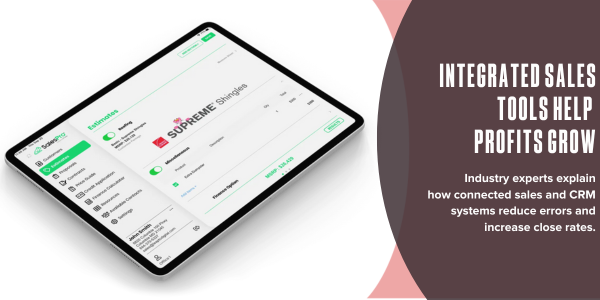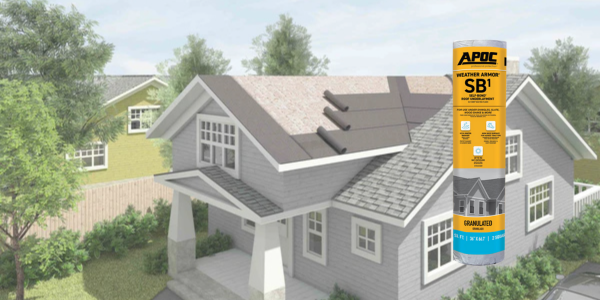Urethane vs Co-polymer Rubber Roof Caulks

By Les Burch, President, Sashco Sealants.
There are a lot of caulking brands out there and finding which might be the right one for each job can be daunting.
It can be simplified by starting with a technology view rather than a brand view. As you get ready for some clarification, first a word of caution.
No matter what technology you choose, there are a range of qualities between brands. As in any product type, from nails to circular saws, there are always good ones, great ones, and lousy ones. Caulking and sealants are no exception. And most often the great products do what they all do -just a lot better. The ‘a lot better’ is often the difference between a roof leak and a satisfied customer.
Starting with the basics, let’s compare just two technologies. Most roofers and remodelers know about urethanes, but fewer know the co-polymer rubber technology behind a group of brands they may have used. To connect co-polymer brands that may be in your head; Sashco has two, Through the Roof!® and Lexel®. Other brands you might know include Geocel 2300® and Henry® 212. There are several others, but did you know these are all based on co-polymer rubber technology?
Urethane sealants have been used in construction since the mid 1950s including many roofing applications. So, after so many years, why are co-polymer sealants making an inroad into the roofing market?
Where do they differ?
Urethane |
Co-polymer Rubber |
|
Application |
|
|
Short Shelf Life (12 months or less) |
Long Shelf Life (3 years or more) |
|
Fiber cartridges |
Plastic cartridges possible |
|
Avoid rain too soon after application |
Immediately rain resistant |
|
Once opened must use |
Can be re-used weeks later. Best with removable nozzle |
|
Very sticky to tool |
Kind of sticky to tool |
|
Hard to gun-out, especially in low temperatures |
Many are easy to gun out in below freezing temperatures |
|
Damp surfaces can interfere with adhesion or cause bubbling |
Can stick to wet surfaces |
|
Do not apply around curing silicone, alcohol, asphalt, tar, or soapy water. They interfere with cure. |
Do not apply to EPDM membranes (it swells them) or polystyrene insulation (it eats them) |
|
Available in colors except clear |
Available in clear and colors |
|
Clean up with xylene or mineral spirits |
Clean up with toluene, mineral spirits, or orange cleaner |
|
Cure time: 5-7 days depending on temperature and humidity |
Cure time: 5-7 days depending on temperature |
|
Performance |
|
|
High tension (175-350 psi), resists relaxing when stretched |
Lower tension (20-190 psi), relaxes when stretched |
|
500% - 800% max stretch |
400%-700% max stretch |
|
Environment |
|
|
Made using iso-cyanates |
Made using solvents like toluene |
|
Low VOC (<40 gms/l) |
Higher VOC (typical 250 – 380 gms/l) |
|
Other ‘Good to Knows’ |
|
|
High solids/low shrinkage |
Lower solids/higher shrinkage |
|
Cure mechanism is by chemical reaction |
Cure mechanism is by solvent release |
|
Non-flammable |
Flammable |
What characteristics do these technologies share?
-
Excellent adhesion to a variety of surfaces
-
Inherently freeze thaw stable
-
Paintable
-
Solvent clean-up
-
Can be re-applied over itself without having to remove the old caulk
What does it all mean?
It would take too long to identify the benefits of all these features. For example, we could tell you that you would prefer to deal with all-weather plastic cartridges rather than fiber cartridges that get soggy. But you know that already.
Or that the high tensile strength of urethanes can tear the substrates. For each of the characteristics above you can no doubt think of the benefits and challenges to each. Remember that the best of the characteristics only come in the best of brands.
But the bottom (caulk) line is this: if you haven’t tried a co-polymer rubber you’re missing out on a technology with really good application and performance advantages. And, among co-polymer rubber technologies, if you haven’t tried Sashco’s Through the Roof!® . . . well you know.
We (and your colleagues) would love to see your comments on successes and failures with these two sealant technologies.
Learn more about Sashco and all of their great repair solutions in their RCS Directory.






















Comments
Leave a Reply
Have an account? Login to leave a comment!
Sign In